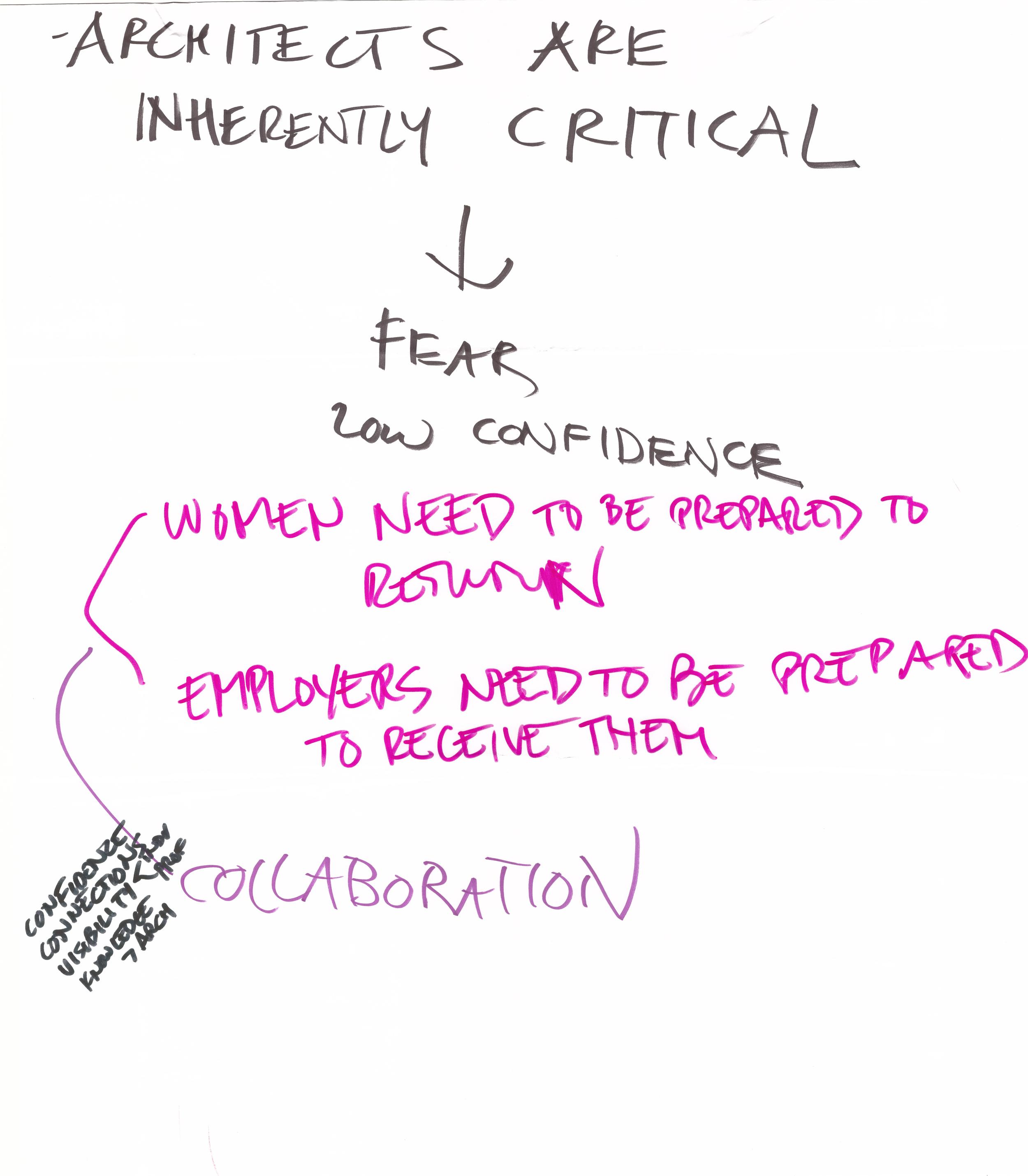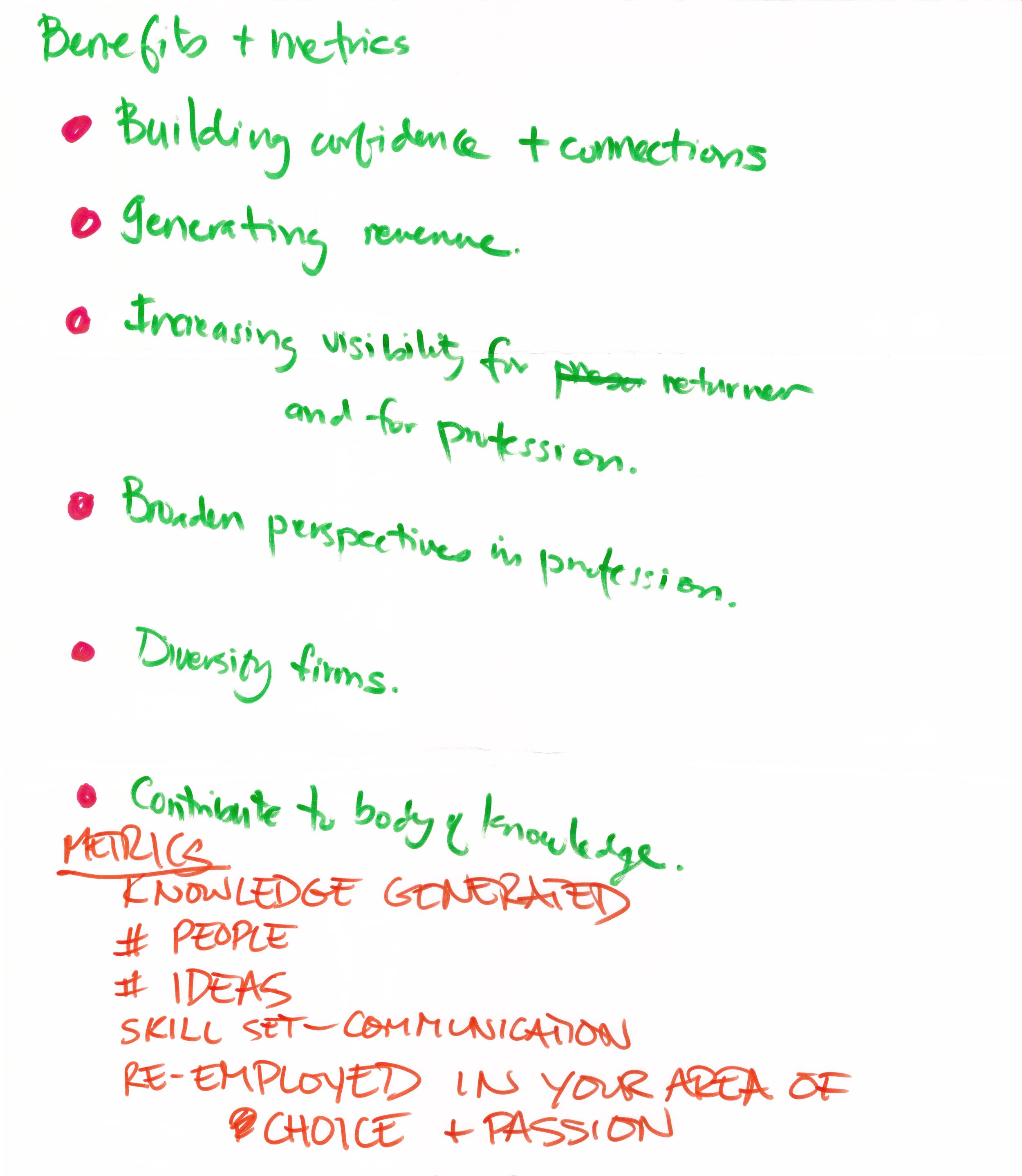by Rosa T. Sheng, AIA LEED AP BD+C
We are very excited to introduce our 10 EQxD Hackathon Scholarship Winners that will be joining as on Wednesday May 18th at AIA National Convention in Philadelphia. We appreciate all of you that submitted applications for consideration, it was a really tough decision.
Shawna is a licensed architect in North Carolina at Perkins+Will. She earned her Master of Architecture degree from North Carolina State University where she now teaches Digital Representation as an Adjunct Faculty member. Shawna is actively involved in her local section of AIA, currently serving as the architect chair for the Young Architects Forum (YAF). Shawna also continues to pursue her greatest architectural passion – tall wood buildings. When she isn't participating in a competition or scouring the internet for the latest on tall wood innovation, Shawna races motorcycles, and spends time with her husband, Kevin and their cat, Moo.
“Architecture and the Era of Connections means that technologically speaking, employers are more equipped than ever to promote flexible work environments - scattered teams can come together online to push a project forward and mothers can breast feed or pump while checking emails – just a few examples of how we can be more flexible as a result of technology. However, there are downsides – clients expect more from us but want to pay less, and many argue the craft is gone from our profession since anyone can utilize Sketch Up to design a house; do we even need architects anymore? How can we continue to demonstrate our value to society and keep our profession relevant?”
Ricardo J. Maga-Rojas - @_MagaRojas1906
Ricardo de Jesús Maga Rojas (born 22 October 1989) is an Afro-Cuban aspiring architect. Born in Banes, Holguin, Cuba and raised in Miami, Florida. A recent alumnus of Tuskegee University's Robert R. Taylor School of Architecture and Construction Sciences (TSACS) in 2013, Ricardo is currently a Master’s Candidate in Urban Planning at Texas A&M University where he serves as the AIAS Chapter President while working part-time as an Architectural Intern at Patterson Architects in Bryan, TX.
“Architecture and the Era of Connections” means that an ever-changing profession in an ever-changing world seeks to promote diversity and justice in the architecture profession in order to effectuate change and form connections with our global brethren.”
Kelly Duignan - @kelduignan
Kelly Duignan grew up in Lancaster, PA and moved to Philadelphia in 2008 to attend Drexel University, an accredited part-time evening program from which she graduated in 2013 with her Bachelor of Architecture degree. After some time at the Delaware Valley Green Building Council as a Marketing Associate and Graphic Designer, she is currently an Architectural Intern at Olaya Studio in West Philadelphia. Kelly is also a volunteer with the Community Design Collaborative, and was recently awarded ‘Rookie of the Year’ by the nonprofit for her volunteer efforts within the organization.
“Architecture and the Era of Connections means visibility, creative collaboration, shared interests, stories with impact, uplifting others, innovative ideas, change and positivity.”
Braham J. B. Berg - @BBB3rg
Braham Berg is an M.Arch and MSRED Candidate at Tulane University, the Tulane AIAS Chapter AIA Liaison on the AIA NOLA Executive Board, the National Charette Lead on the AIAS National Freedom by Design Advisory Group, and Creative Lead for Telephone NOLA [www.telephonenola.us], a New Orleans-based interdisciplinary arts exchange. Braham is engaged at bridging the connection between academia, practice, and community at local, regional, and national levels, from mentoring students through NOMA Louisiana’s Project Pipeline program, facilitating charettes at 2016 AIAS Midwest Quad (Detroit) and AIAS Forum (San Francisco), and serving as the Volunteer Coordinator at 2015 NOMA National “Rise” (New Orleans).
“Architecture and the Era of Connections means 1.) showing how architecture is inherent in the daily lives of everyone on this planet no matter gender, race, place, ideology, or background; 2.) Architecture spanning beyond the traditional realms of forms into all interdisciplinary realms (arts+sciences+business+law) where design and architecture can impact and address social issues as a problem; 3.) using/ adapting technology (wisely!!) as a way that enhances everyone’s experience of space or place (online or physical); 4.) inspiring others—of all a GWS and from all around the world— of the potential that they too can create their visions and improve the existing.”
Ryan Orr – @ROrrArch
Ryan Orr is an architectural designer at KCBA architects and currently pursues his architectural license as an emerging professional. After graduating from The Pennsylvania State University with a B.Arch in 2013, Ryan now utilizes his design talents and technology interests to create a vision for 21st century schools and learning spaces. As a member of the PEA – Philadelphia Emerging Architects, he fosters relationships between professionals, students, and future members of the Architecture profession through mentorship programs, technology trainings, ARE study groups and high school career exploration activities.
“Architecture finds itself at a crossroads – dis-similar to the master builder of old; an architect connects across multiple platforms, places, and people in order to achieve architecture. From clients, consultants, and craftspeople to stakeholders, investors, and developers, an architect guides the process utilizing techniques and tools that may be improved by these connections. The ability to manage, develop, and maintain control of all the moving parts strains the real goal of architecture, and the capacity to design across disciplines, borders, and other barriers. The 21st century resources available to an architect, including technology and business strategies, are essential to the future of architecture.”
Obiekwe “Obi” Okolo - @ObiMatteo
The unique experience of living in Lagos, Nigeria during childhood shaped Obi’s perspective and passion for doing good for the world. To gain greater understanding about design, he studied at the University of Texas, San Antonio (UTSA), where he received a degree in Interior Architecture. Concurrent with his studies, Obi immersed himself within the community of fellow students and served as Chapter President of the American Institute of Architecture Students (AIAS) for two concurrent years. It was during that time that his began working on aid-based design – a way to blend humanitarian efforts and entrepreneurship. In 2015, Obi served as AIAS National Vice President.
“Among other things living in an era of connections makes it nearly impossible for me, in my mind, to justify the many reasons you often hear for why architects/designers/the profession is the way that it is. In an age where an average patient can, at least, broadly understand an impending operation or crippling diagnoses through innovations in technology and story-telling, there is no reason we should still be asking the question “Why doesn’t the public understand what we do?” ...Simply put, it’s because we don’t really want them to yet.”
Daniel Teed
Dan grew up in a small town on the Iowan banks of the Mississippi and his initial interest in architecture came from his love of the honest expression of steel, wood, and stone found in the bridges spanning the Mighty Mississippi. He graduated from the University of Utah with a master's degree in architecture in 2014 and has since practiced in Salt Lake City. He is passionate about architecture for under price ledges populations and has designed and implemented work on the Navajo Nation, in the rural desert towns of Utah, and in Salt Lake City.
“From smart homes to social media, “ease of connectivity” is the movement that defines our modern era. The way we interact with architecture, the environments in which we live, work, and play, is naturally changing in response to this concept of instant connectivity. In 2016 we are poised on the edge of an architectural revolution that will propel our concept of connections forward and forever change the course of our profession! ”
A. L. Hu - @a_l_hu
A.L. Hu is a genderqueer first generation person of color who is currently a Master of Architecture student at Columbia University’s Graduate School of Architecture, Planning, and Preservation (GSAPP). Their research, writing, and design work is at the intersection of gender, race, community, and architecture. A.L. is a GSAPP Program Council member; co-founder of GSAPP Students of Color Association; founding member of Queer Students of Architecture, Planning, and Preservation; co-organizer of ArchiteXX at GSAPP; and a GSAPP student representative on Columbia University’s Race, Ethnicity, and Inclusion Task Force. A.L. uses the gender-neutral pronouns they, them and theirs.
“Architecture and the Era of Connections means that the profession must respond to the digital age in which we live — nowadays, we are always “on” through Facebook, Twitter, LinkedIn, and so on. It is now easier than ever to connect and reach a broader, diverse, global audience, not to mention research deeper and find information faster. But this new era of connections does not come without consequences to fields like Architecture, which has its roots in more “traditional” communication methods. We must ask, how does Architecture remain connected through this new mode of communication, and what changes need to happen to foster this connection?”
Hilary Barlow, AIA, LEED AP BD+C - @YDC_Payette
Hilary Barlow is an Architect at Payette, current co-chair of the firm’s Young Designers Core and a member of the AIA Center for Civic Leadership Committee. Hilary is interested in engaging young leaders and creating new opportunities to supplement emerging professionals’ learning. She led the firm’s award-winning submission for the IDP Outstanding Firm of the Year Award and has initiated new platforms to foster mentorship at Payette. Hilary joined Payette after completing her B.Arch at Syracuse University in 2013, and has been highly involved with collaborative design assist at Payette.
“Not only does Today’s technology keeps us connected and plugged in constantly, but it has the potential to disrupt the paradigm of Architecture. BIM, scripting and parametric design are just a few of the ways industry trends are reshaping and redefining the Architecture, Engineering and Construction professions. In the Era of Connections, Architecture has the potential to be at the forefront of change—from how buildings are conceptualized, designed, coordinated and built.”
Jonathan Meadows, RA @jonathanbmeadow
Jonathan Meadows graduated from Auburn University in 2010 with a B. Arch degree, became LEED accredited in 2013, and received his architectural license in August 2015. In addition to being a project architect at Williams Blackstock Architects, he is the Director of Emerging Professionals for AIA Birmingham. He has been very active in his community: he's a consistent volunteer for ACE Mentorship, co-chaired a lecture series designed to bring together the EP groups of contractors, engineers, and architects, has been a guest juror for the Auburn University Urban Studio, and organized and led a historic architectural walking tour of downtown Birmingham.
“I believe that more than at any other time, Architecture is a field of teamwork and collaboration. As our buildings become more complex, the need for specialization increases, and the architect’s role becomes one of coordination rather than as a master-builder. I see technology as a facilitator of this process from conception, to design, to construction, and the architect as a well-rounded generalist and team leader.”
REGISTER FOR EQxD HAPPY HOUR ONLY
And don't forget to join us for EQxD Happy Hour at Smokin' Betty's after the Hack!
Special Thanks goes to our EQxD Hackathon Scholarship Sponsors including Autodesk, McCarthy Building Companies, WRNS Studio, HOK and HGA.












































